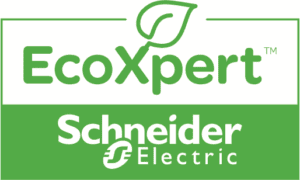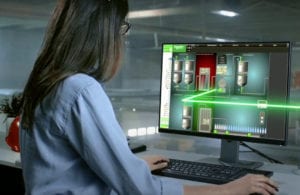In the fast-paced world of building automation systems (BAS), not all solutions are created equal. This is especially evident when the decision is made to modernize an older system in order to gain efficiency or connectivity advantages. In such cases, when a technology transition is required, these solution differences are especially magnified.
Certain vendors in the space continue to offer closed, proprietary systems which prevent easy modernization efforts. Their platform design is such that the ability to export and share data is limited and this often locks customers into long-term and expensive service and support contracts. While some may be tempted by their low entry price, this proprietary system strategy is designed to lock customers in for the long term and generate on-going service and support sales.
With such daunting challenges associated with proprietary systems, why would anyone ever choose a solution like that? To entice prospects, vendors offering these solutions appeal to new customers with a low initial buy-in price. Here’s how it generally works: When a potential client asks a group of qualified vendors to submit a BAS proposal, some will present a bid at an at-cost or below-cost price. But let the buyer beware! These deeply proprietary solutions offer limited opportunities to integrate or share data and, as a result, customers find themselves highly dependent on their vendor. Once customers are “locked-in,” the vendor is free to charge high rates for service and upgrades. In nearly all of these cases the overall total cost of ownership of these proprietary solutions far exceeds other, more open, platform options.
Some customers are comfortable with the proprietary system arrangement. But many are not because their flexibility to accommodate change is limited. Should marketplace dynamics or new technology breakthroughs open the door to new opportunities, the proprietary system in place may delay the customer’s ability to respond. The change in systems would represent a 100% replacement cost which, in many cases, is not practical or affordable.
In fact, most customers I deal with don’t want to rip out their existing systems. They want to preserve their investment for as long as possible but maintain the freedom to modernize their systems whenever market dynamics dictate that they do so.
This is why, whenever I meet with customers who operate hospital facilities, schools or commercial buildings, I recommend an open systems platform approach. In contrast to being restricted to the limitations of proprietary systems, the open approach minimizes, and in some cases completely avoids, having to “rip and replace” installed equipment in order to modernize.
Open platforms provide flexibility and lower upgrade costs
Over the years, our company, Wadsworth Solutions, as a Schneider Electric EcoXpert business partner, has established a successful track record installing and supporting Schneider Electric building automation solutions across commercial, educational, industrial, and healthcare facilities in the Ohio and Michigan region. Unlike some others, we work to limit the impact of product obsolescence. Our solutions provide an open path to modernization without having to rip and replace. Our “no controller left behind” philosophy allows clients, regardless of their installed base of systems, to poll and extract data from their building infrastructure regardless of whether their systems are old or new, open or proprietary—and at lower cost.
For industries where mergers and acquisitions are common (for example, healthcare), open systems make it less costly to combine and integrate systems across differing platforms. One of our hospital group customers, for instance, manages 25 hospitals. Two thirds of their hospitals run proprietary BAS with equipment from multiple vendors. Their facilities staff is tasked with managing five different operating systems across their global network.
We help our clients support this complexity in several ways. First, we help them migrate each individual building onto a standard, open platform (an open platform that stands above the five others in the hierarchy). Second, we help them to establish consistency in their fundamental BAS-related tasks such as programming, sequence of operation, and scheduling. Third, we help our clients to both formulate and execute their integration strategy for subsequent system changes.
This work involves answering questions such as:
- “What is the best way for these systems to integrate?”
- “Will this system perform strictly as a Building Management System (BMS)?”
- “How can I best integrate new lighting control technologies?”
- “How can I integrate updated security and access control?”
- “How can I integrate power monitoring and metering in order to better control my energy expense?”
In the end, the customer has a strategic path for moving forward, one where they can modernize their field level controllers at their pace and not at the vendor’s pace.
To learn more about how digitized building automation solutions can enable modernization under an open platform, visit the Schneider Electric EcoStruxure for Buildings web site.
EcoXpert™ Partners – the Implementation Arms of EcoStruxure™
The EcoXpert Partner Program is unique in its industry and made up of a best-in-class global ecosystem of expertise. Trained and certified by Schneider Electric, EcoXperts are the implementation arms of EcoStruxure in homes and buildings all over the world.
Schneider Electric’s EcoXpert Partner Program unites the world’s leading technology providers, who exhibit best-in-class system integration competencies in facility optimization, reliable infrastructures and energy management, with its customers around the globe. Stronger together, this partnership cultivates collaboration, connects expertise, and delivers best-in-class services and solutions.




